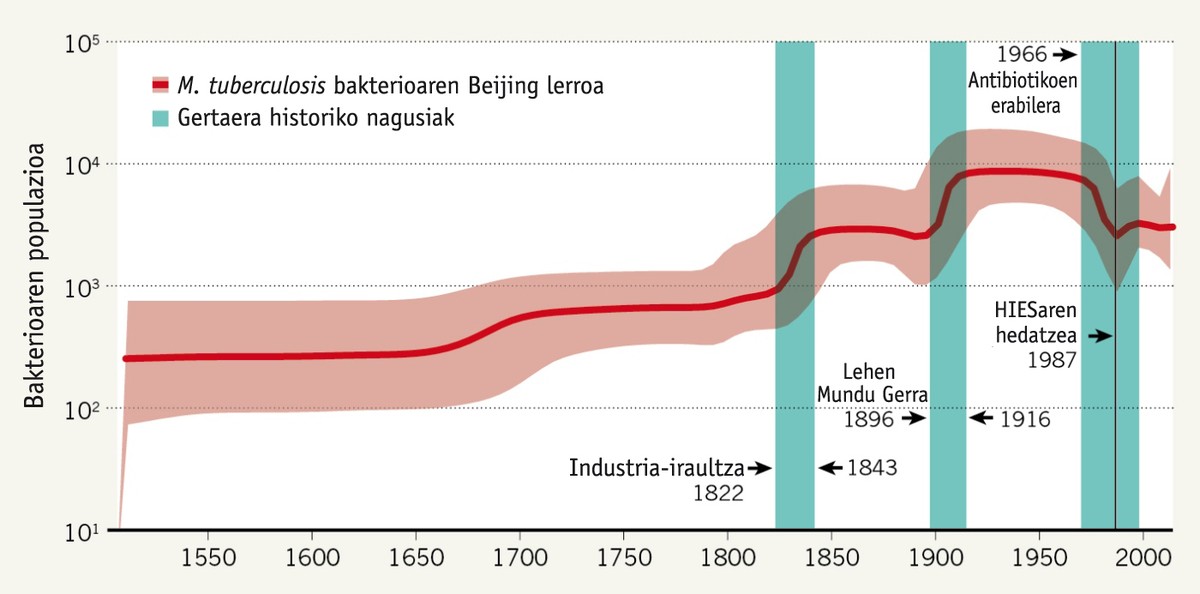Historical evolution of antibiotic-resistant tuberculosis
2015/02/02 Etxebeste Aduriz, Egoitz - Elhuyar Zientzia Iturria: Elhuyar aldizkaria

An international research team analyzes the historical evolution of one of the hardest variants of the bacterium that causes tuberculosis from its DNA. They have seen how the evolution of the population of these bacteria coincides with a series of important events in the history of mankind. The work has been published in the journal Nature Genetics.
The Beijing line of Mycobacterium tuberculosis is one of the most conflicting for being resistant to effective antibiotics against other lines. To study the evolution of this line, 5,000 samples collected in 99 countries have been analyzed. And they conclude that the line was created about 6,600 years ago, northeast of China. This date coincides with the first archaeological remains in which rice was started to work in the valley of the Yangtze River. In fact, according to another previous study, the extension of the ancestor of all current M. tuberculosis is also related to the beginning of agriculture (Mesopotamia and the Nile delta, 10,000 years ago).
According to the researchers, the Silk Road would contribute to the diffusion of these first bacteria from the Beijing line, as well as other waves of emigration from later Chinese. On the other hand, the fluctuations of the line population in the last 200 years coincide with relevant historical events. For example XIX. At the beginning of the twentieth century the bacterial population increases considerably, which could be directly related, according to researchers, to the growth of cities due to the industrial revolution. The same occurs in the XX. At the beginning of the century, during the First World War. Subsequently, the descent coincides with the introduction of antibiotics in the 60s. Finally, a new rise in the late 1980s and early 1990s coincides with the expansion of AIDS and the decline of the Soviet Union.

Gai honi buruzko eduki gehiago
Elhuyarrek garatutako teknologia






